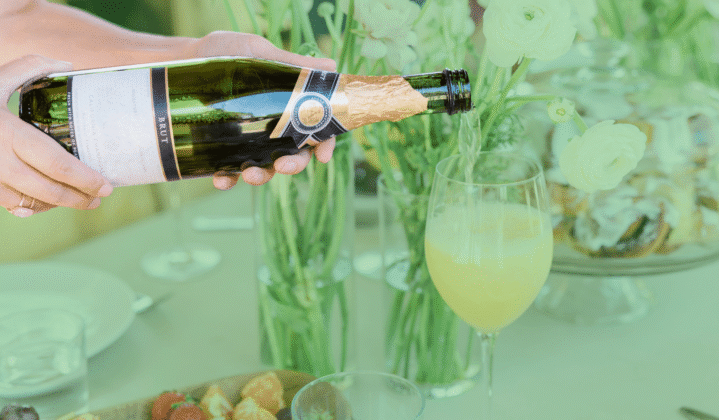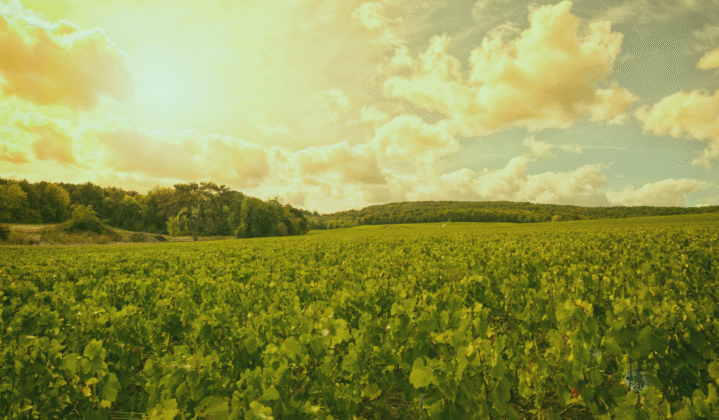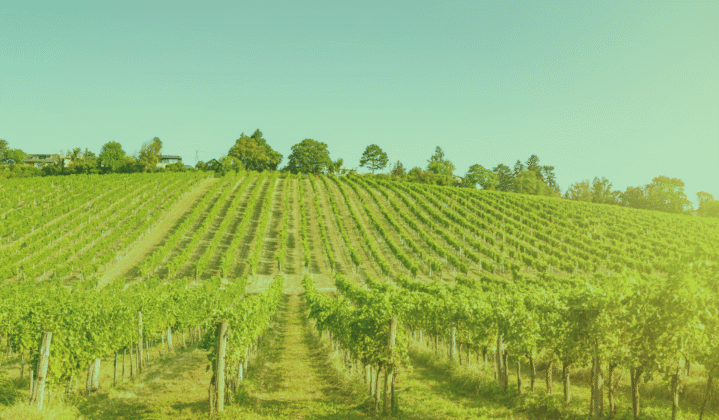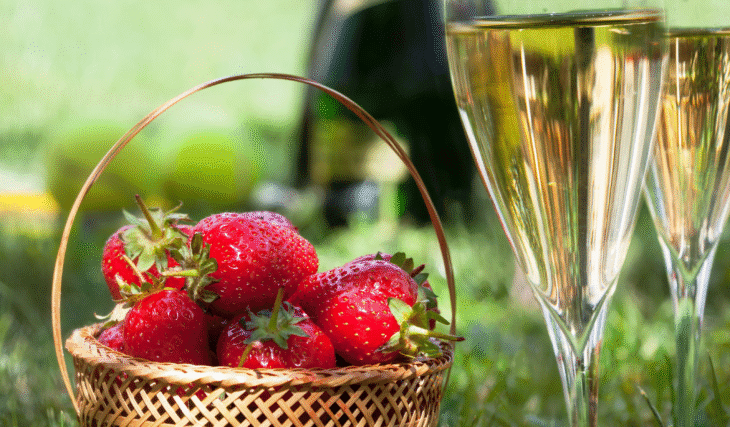What Is Vintage Champagne? Discover the Difference from Non-Vintage Bottles
Walk into any Champagne aisle and you will likely overhear someone asking whether a particular bottle is vintage. For Champagne lovers and collectors, there is a certain magic in a year that earns the honor of being declared a vintage. But what exactly sets a vintage Champagne apart from the more common non-vintage bottles you see lining the shelves throughout the year? Is there truly a difference worth celebrating, and should you consider choosing one for your next special occasion?
A vintage Champagne is made entirely from grapes harvested in a single, exceptional year unlike non-vintage Champagne, which blends wines from different years to create a consistent taste. By law, vintage bottles must age for at least three years, though many are left undisturbed in the cellars far longer to develop richer layers of flavor and texture. Understanding the difference between vintage and non-vintage Champagne means looking beyond the elegant label. It means learning how each is crafted from harvest to cellar, why aging makes all the difference, how flavor profiles evolve over time, and what price tag you can expect when you invest in a bottle from an exceptional year.
Knowing when and why to reach for vintage over non-vintage helps you appreciate each style for what it offers in the glass, whether you are toasting a milestone or simply savoring a quiet moment worth remembering.
Key Takeaways:
- Vintage Champagne is made from grapes harvested in a single exceptional year, unlike non-vintage blends which combine multiple harvests for consistency.
- By law, vintage bottles must age for at least three years, though many are matured far longer to develop deeper flavor, texture, and complexity.
- Non-vintage Champagne is more widely available and affordable, crafted to deliver a consistent house style ideal for everyday celebrations.
- Vintage releases are rare and only produced in standout years, making them prized among collectors and ideal for marking meaningful milestones.
- Understanding what is vintage Champagne helps people appreciate its craftsmanship, from vineyard to cellar, and experience the uniqueness each bottle holds.
Champagne Basics: What Makes It So Special

Only wine produced in the Champagne region of France can legally be called Champagne. Each bottle must follow strict rules, starting with the use of approved grapes like Chardonnay, Pinot Noir, and Pinot Meunier. Winemakers craft it using the Traditional Method, or Méthode Champenoise, where bubbles develop naturally through a second fermentation inside the bottle.
Generations of careful craftsmanship, precise blending, and long aging shape Champagne’s unique character and reputation for quality. This dedication to detail is also what makes vintage years so meaningful to collectors and enthusiasts.
What Exactly Is Vintage Champagne
A vintage Champagne is a snapshot of a single growing season, shaped by the climate, soil, and decisions made in the vineyard and cellar that year. Unlike bottles blended for a consistent taste, a vintage cuvée highlights the unique character of one harvest alone.
Top Champagne houses declare a vintage only in years when the grapes reach an outstanding level of quality. This selectiveness makes vintage releases less frequent and more prized by collectors. When you spot a year on a Champagne label, you know it holds the essence of that particular season from vine to glass.
Non-Vintage Champagne: Why It Is the Everyday Icon
Most Champagne sold worldwide is non-vintage, often abbreviated as NV. These bottles are crafted by blending base wines from multiple harvests to maintain a consistent house style, no matter how the weather shifts each year.
Non-vintage Champagne must age for at least fifteen months, but many producers extend this to two or three years to build balance, freshness, and depth. Because it is not tied to a single year, non-vintage Champagne lets producers blend fresher wines with carefully kept reserve stocks to deliver that same familiar taste every time you open a bottle.
Vintage vs Non-Vintage Champagne: The Real Differences

Grapes and Harvest
Made from a single exceptional harvest, a vintage bottle captures the exact climate and vineyard conditions of that year. Non-vintage blends wines from different years to guarantee a consistent house style, no matter the weather.
Aging and Maturation
By law, vintage cuvées must rest for at least three years, but many spend five to ten years developing added layers of richness and texture. Non-vintage bottles rest a minimum of fifteen months, with many producers choosing two to three years for extra balance.
Taste and Complexity
Expect richer, deeper flavors and more structure in a vintage pour, often showing notes of brioche, honey, or toasted nuts. Non-vintage is crafted for freshness and balance, delivering lively bubbles and bright fruit ready to enjoy immediately.
Production and Availability
Declared only in outstanding years, these releases are limited and often treasured by collectors. Non-vintage is made every season, ensuring wide availability for any celebration big or small.
Price and Value
Collectors and enthusiasts pay more for the rarity, aging, and prestige that comes with a declared year. For everyday toasts, non-vintage is more affordable and offers excellent quality without the premium price.
When to Drink
Cellaring a vintage bottle rewards patience, often evolving beautifully over a decade or more. A non-vintage is designed to shine when opened young, capturing the house’s signature taste at its freshest.
How Sweetness Levels Shape Champagne Styles
Both vintage and non-vintage Champagnes can range from bone dry to sweet. The most popular style is Brut, which has minimal added sugar. Some are even drier, labeled Extra Brut, while Demi-Sec or Doux styles have more sweetness for those who prefer dessert wines. Vintage Champagnes are typically Brut or Extra Brut because extended aging naturally softens the acidity, needing less added sugar for balance.
Grapes, Vineyards, and Cru: The Secrets Behind Quality

Champagne relies on three main grapes. Chardonnay brings finesse and freshness, Pinot Noir adds structure and body, and Pinot Meunier lends round fruitiness. Some vintage Champagnes spotlight a single grape, like Blanc de Blancs made entirely of Chardonnay or Blanc de Noirs crafted only from Pinot Noir and Pinot Meunier.
Vineyard location also shapes quality. The best vineyards earn Grand Cru or Premier Cru status, prized for their unique soils and climate. Many celebrated vintage Champagnes come from these top-rated villages, adding another layer of distinction.
The Most Iconic Vintage Champagne Producers
While nearly every Champagne house produces non-vintage labels, only the most respected declare vintages in exceptional years. A few iconic names include:
- Dom Pérignon — always vintage
- Krug Vintage — known for depth and power
- Pol Roger Vintage — elegant and balanced
- Bollinger Grande Année — bold and richly textured
- Louis Roederer Cristal — the renowned prestige cuvée
Each producer brings a unique winemaking philosophy and house style, giving vintage Champagne its individuality and charm.
When Should You Pick Vintage Champagne Over Non-Vintage
Reach for vintage Champagne when you want to mark a true milestone — a wedding, an anniversary, a significant birthday, or any celebration that deserves something remarkable. Vintage Champagne pairs beautifully with luxurious dishes like lobster, aged cheeses, truffle risotto, or roast poultry. It also rewards patience if you wish to cellar it for years to come.
Non-vintage Champagne is your anytime icon. Its fresh, bright character makes it perfect for brunch, spontaneous gatherings, or any day you want to add sparkle without needing a grand excuse.
How to Decode a Champagne Label Like a Pro
If you want to pick the perfect bottle, watch for these hints on the label:
- Vintage Year — A single year means it is vintage.
- Producer Name — Big houses like Dom Pérignon or Bollinger often signal prestige.
- Dosage Level — Look for Brut, Extra Brut, Sec, or Demi-Sec to know the sweetness.
- Grower or House — RM stands for grower-producer, NM for négociant house.
Great Vintage Years: What to Look For
Not every harvest in the Champagne region is good enough to be declared a vintage. The climate can be unpredictable, so producers wait for seasons when grapes develop the ideal balance of ripeness, acidity, and structure. These rare years produce bottles that age beautifully and reveal layers of character over time.
Some standout vintage years to know:
- 1996 — High acidity and freshness with excellent aging potential
- 2002 — Rich, balanced, and harmonious, loved by collectors
- 2008 — Crisp, precise, and already showing elegance
- 2012 — Generous fruit and bright structure, promising for long-term cellaring
- 2015 — A recent favorite with ripe fruit and good balance
Each Champagne house decides whether to declare a vintage. This means bottles from the same year can taste different depending on the producer’s vineyard sites and style. Reading producer notes and tasting reviews helps you find the right vintage for your taste, whether you want a fresh, youthful bottle or one with more mature, toasty complexity.
What Is Vintage Champagne and What Makes It Exceptional
What is vintage Champagne if not a celebration of everything that makes this iconic wine so revered? It is the product of a single extraordinary year, when nature, vineyard conditions, and winemaking decisions align to create something truly unforgettable. Unlike the consistent character found in non-vintage blends, a vintage bottle reveals personality, tension, and depth that could only come from that one moment in time. It does not strive for predictability. Instead, it embraces individuality, allowing the wine to speak through its richness, complexity, and maturity.
For many people, understanding vintage Champagne is more than learning the difference between labels. It is about recognizing the value of rarity and the intention behind every bottle. These wines are not made every year, nor are they opened casually. They are chosen with purpose, aged with care, and reserved for moments that deserve something truly special. Whether people are discovering Champagne for the first time or refining their taste, learning what is vintage Champagne opens the door to a deeper experience — one that celebrates craftsmanship, captures time, and connects people to something that will never be repeated in exactly the same way again.
